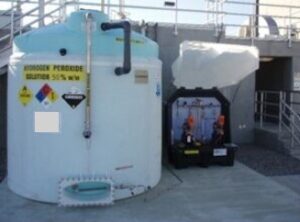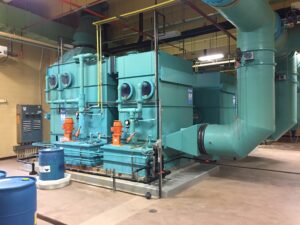What Do Industrial Odor Control Consultants Do and How Can They Help? A Day in the Life at WEA
 Many facility operators and managers know they have an odor issue but aren’t sure what steps to take. They often ask what role industrial odor control consultants actually play. At Webster Environmental Associates (WEA), we help solve these problems by offering technical guidance, custom solutions, and long-term support. Let’s walk through what our team does on a typical project, from the first phone call to ongoing system monitoring.
Many facility operators and managers know they have an odor issue but aren’t sure what steps to take. They often ask what role industrial odor control consultants actually play. At Webster Environmental Associates (WEA), we help solve these problems by offering technical guidance, custom solutions, and long-term support. Let’s walk through what our team does on a typical project, from the first phone call to ongoing system monitoring.
Initial Contact and Site Walkthrough
Most projects begin with a phone call or email from a plant manager, utility director, or engineering firm. They usually describe the odor issue and share background information about their system. Some have received complaints from neighbors, while others are working to meet permitting requirements or prepare for expansion.
After this first conversation, we often schedule a site visit. We walk through the facility, look at treatment processes, and ask detailed questions. These may include how long the odor has been a concern, what systems are in place, and whether any previous attempts have been made to fix the issue. This helps us understand the full picture before we begin formal testing.
Odor Sampling and Data Collection
Accurate data is the foundation of any effective odor control system. Once we’ve identified possible sources, we collect air samples at key locations. We also take liquid samples if hydrogen sulfide (H₂S), ammonia, or other odor-causing compounds are present in water or sludge.
In some cases, we also use odor panels—groups of trained individuals who evaluate samples based on smell. While this may sound simple, it provides important insight into how odors are perceived by the public. We combine this with instrument readings to measure exact concentrations of compounds.
Choosing the Right Technology Mix
Once the data is in, we begin evaluating treatment options. Every facility is different, so industrial odor control consultants must weigh multiple factors. These include the type and strength of odors, the size and layout of the facility, available space, operating budget, and permit requirements.
Some sites need chemical scrubbers to remove high concentrations of specific gases. Others benefit from biological solutions like biofilters or biotrickling filters. In many cases, we recommend using more than one system. For example, a biofilter might handle steady emissions while a carbon adsorber provides final polishing for remaining compounds.
We also look at the liquid phase. In many wastewater systems, odors start in the pipes or basins before the air becomes a problem. Adding liquid-phase treatment, such as oxygen or hydrogen peroxide injection, can help reduce odors before they reach the surface.
System Design and Support
 After agreeing on the right approach, WEA provides a detailed odor control system design. This includes layout drawings, equipment sizing, ductwork plans, and control system recommendations. We also develop performance expectations and monitoring guidelines based on actual field conditions.
After agreeing on the right approach, WEA provides a detailed odor control system design. This includes layout drawings, equipment sizing, ductwork plans, and control system recommendations. We also develop performance expectations and monitoring guidelines based on actual field conditions.
Once the system is installed, we provide startup assistance and train on-site staff. This helps teams understand how the system works, how to monitor performance, and what routine maintenance is required. Training also covers chemical safety and odor sampling procedures when needed.
Follow-Up and Performance Tracking
Our job doesn’t stop after installation. Industrial odor control consultants play an important role in long-term system performance. We offer follow-up evaluations to verify that emissions remain within target levels. If odor complaints return or conditions change, we come back to reassess and make adjustments.
We also help with media replacements in biofilters, chemical dosage changes, and monitoring upgrades. Staying involved helps facilities avoid small problems that can turn into major issues.
For example, if a facility changes its process or adds new equipment, the odor profile might shift. We can test again and recommend changes without having to start from scratch. Our goal is to build systems that work not only on day one but over the long term.
Why It Pays to Work With Experienced Consultants
Not all odor problems are the same. The right system depends on many factors that can’t always be seen on paper. That’s why experience matters. At WEA, our consultants have worked with wastewater utilities, composting sites, food processors, and more. We know which solutions work best in each setting because we’ve tested and installed them ourselves.
Our approach is hands-on and data-driven. We don’t use off-the-shelf solutions. Instead, we design systems around your facility’s specific needs. We understand that most sites must balance technical performance with budget, staffing, and compliance goals. Our job is to help you meet those goals with straightforward recommendations and real-world support.
If you’re managing a facility with odor concerns and aren’t sure what to do next, we’re here to help. Contact Webster Environmental Associates to schedule a consultation or odor evaluation. We’ll walk your site, review your data, and work with you to develop a clear, practical plan for odor control.
